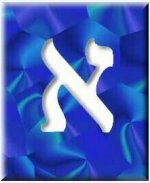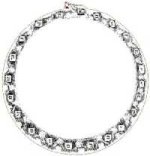jmd
The first letter in the Hebrew alphabet (or, rather, alefbet), is Alef (also transliterated as Aleph). Its various meanings are:
There are three types of letters in the Hebrew alphabet, three of these being designated as Mother Letters. Alef, connected to the element of Air in the Sefer Yetzirah, is one of those three Mother letters, and is linked to both the lungs in the human being and to the Mind or thoughts of God in the Divine realm.
I should note that I am certainly no Hebrew scholar and, as mentioned in the thread Sanctum Sanctorum, know but little Hebrew. I trust others with various interests, reflections, questions and comments will post.
Attached is the letter, as given on the wonderful Kabbalistic Inner Org site. As with our Roman alphabet, Hebrew cursive script looks, of course, different (as does our lower-case cursive to its Roman capital) - the letters I'll attach are the equivalent to capitals.
- (cardinals=) One, Thousand; (ordinals=) first;
- Leader, master;
- Teach, teaching;
- Ox(en), bull, strength;
- (at times, also said to be) Adonai.
There are three types of letters in the Hebrew alphabet, three of these being designated as Mother Letters. Alef, connected to the element of Air in the Sefer Yetzirah, is one of those three Mother letters, and is linked to both the lungs in the human being and to the Mind or thoughts of God in the Divine realm.
I should note that I am certainly no Hebrew scholar and, as mentioned in the thread Sanctum Sanctorum, know but little Hebrew. I trust others with various interests, reflections, questions and comments will post.
Attached is the letter, as given on the wonderful Kabbalistic Inner Org site. As with our Roman alphabet, Hebrew cursive script looks, of course, different (as does our lower-case cursive to its Roman capital) - the letters I'll attach are the equivalent to capitals.



